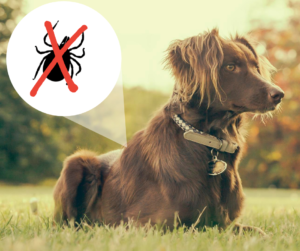 Did you know the infection known as Lyme disease has been around for a century but that it did not become well known to the public until the late 1980’s!? As media presence of the disease grew stronger, more concern about the effect it has on dogs (and their owners) continued to develop. However, the way dogs experience Lyme disease is very different from humans. It is important to understand the risks of Lyme disease and how to protect your furry friend from those risks!
Did you know the infection known as Lyme disease has been around for a century but that it did not become well known to the public until the late 1980’s!? As media presence of the disease grew stronger, more concern about the effect it has on dogs (and their owners) continued to develop. However, the way dogs experience Lyme disease is very different from humans. It is important to understand the risks of Lyme disease and how to protect your furry friend from those risks!
How does Lyme Disease Spread?
The organism that is responsible for transmitting Lyme disease is the dreaded blacklegged/deer tick. The process of transmitting Lyme disease requires a minimum of 48 hours. This means the tick needs to be attached to the host for 48 hours to spread the disease.
How is my dog exposed to Lyme disease?
Lyme disease continues to be a risk to dogs in Canada. Dogs are especially at risk of encountering blacklegged ticks when they spend time outside in wooded areas, long grasses, dead leaves and spaces with brush.
What are the signs of Lyme disease in my dog?
Dogs tend to show no symptoms when they first contract the disease. However, when symptoms do appear, it is typically several months after the dog has been exposed to the tick. The most common signs of Lyme disease in dogs include fever, loss of appetite, painful or swollen joints, lameness that comes and goes, swollen lymph nodes and low energy. If you are ever concerned that your dog may have been exposed to Lyme disease, the first step is connect with your veterinarian regarding the next steps in testing!
Is my dog at risk?
If you are wondering if your dog is at risk, ask yourselves these questions!
Do strays or wildlife sometimes wander onto your property?
Do you take your dog camping and for walks in wooded areas?
Do you travel with your dog?
Are there reports of blacklegged ticks in your area?
If you answered yes to any of these questions, your pet could be at risk of Lyme disease! The good news is there are ways to protest your special furry friend!
Protecting your Pet
- Make sure to check your dog for ticks at least once a day to remove any ticks that you may find. Finding and removing ticks before they have the chance to transmit disease-causing bacteria is very important.
- Not every tick can be seen! There are topical and chewable options for parasite prevention. Because blacklegged ticks can be active anytime temperatures reach 4°C and above, it may be recommended to keep your dog on parasite prevention all year around. Our veterinarians can help make the best choice for your pet at your annual wellness exam!
Sources:
https://veterinarypartner.vin.com/default.aspx?pid=19239&id=4952009
